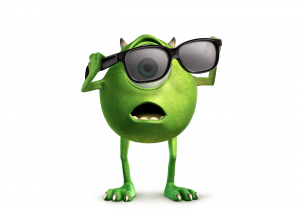
For as long as they have been around, 3D movies have provided the ultimate movie-viewing experience. Audiences watch films come alive through tinted glasses (formerly cardboard cutouts with red and blue lenses), reaching out at flying objects and peeking over the top of the glasses to see what the movie looks like without them. From the stunning IMAX films to action movies highlighted by the special effects, the addition of 3D proves its worth in modern cinemas. However, over the last four years or so, 3D movies have morphed into an unnecessary addition to sub-par films in order to increase the film’s ranking at the box office. Audiences responded negatively as well, as the hiking ticket prices and lackluster experience diminished the appeal of the films. The 3D market seems to be hit or miss, as the massive blockbuster success of 2009’s Avatar has to be matched by the likes of The Call of the Wild 3D and Space Dogs 3D (both of which grossed under a pitiful $30,000). However, major studios have used 3D as an excuse to bring old movies back to the theaters—an area of uncharted waters up until a few years ago. Despite the growing number of box office flops, Disney seems to have found the secret ingredient in making 3D movies a success.
Monsters Inc., Pixar’s film about two lovable monsters who find their careers in jeopardy when a little girl crosses over into Monstropolis, was re-released in 3D on December 19th, 2012. The film made $547.3 during its original November 2001 release, and is currently the 4th most successful Pixar film in North America. The film was nominated for four Academy Awards, and won Best Original Song for its song “If I Didn’t Have You.” Without a doubt, it was a commercial and critical success, as it got Roger Ebert’s stamp of approval and a 96% on Rotten Tomatoes, while still remaining one of the most beloved animated films of the 21st century. This in itself is difficult to come by, due to heightened standards of the modern cinema matched by the decrease in original content. It seems that the story on its own, in addition to the stellar vocal cast, is enough to make the movies still relevant after over a decade. So why bring it back to theaters in 3D?
A better question is, why not? Previous 3D re-releases have proven to be moderately successful, and despite the higher ticket price, bringing back movies most people have already seen with little investment by the studios is proving to be a quick and easy way to make a few extra millions. Back in October 2009, Disney-Pixar decided to bring back Toy Story and Toy Story 2 back-to-back in 3D for a short two-week slot. Boasting a respectable $30.7 million, the modest success opened up a gateway for other releases. Bringing old films back to theaters was unheard of before Disney’s brave venture, and it soon was followed by other classic films. The Lion King 3D was released in September 2011, followed by Beauty and the Beast 3D the following January. The Lion King made an impressive $94.2 million, followed by Beast’s $47.6 million. Paramount soon followed suit, as Titanic, the 1997 smash hit, came back to theaters in April 2012 for the 100th anniversary of the Titanic sinking, and made a modest $57 million (however, a staggering 83.2% of its success came from overseas, totalling $343.6 worldwide). In September, Pixar’s Finding Nemo, a fan favorite and Academy Award winner, collected $41 million. With the December release of Monsters Inc. 3D, Disney-Pixar hopes to continue their chain of churning out past box office hits in 3D in hopes to make a few millions while claiming to draw in new audiences.
Although Disney’s claims of attempting to bring in new audiences are decidedly false, is there really any harm in bringing back Disney (and Disney-Pixar) masterpieces? The flocks of people rushing to see their favorite classics suggest that audiences are just as eager to see these movies as Disney is to release them. Monsters Inc., a film released a short 10 years ago, has already made $23 million dollars since its December 19th release. If Disney is really robbing its viewers by bringing their movies back, then why do the re-releases continue to succeed in the box office? Although the corporation’s decision is clearly a crafty scheme to make a quick buck using old material, their motives have proved to be successful. Disney has created some of the most acclaimed and beloved animated films of all time, and continues to captivate audiences decades after the films’ original releases. Judging by the success of movies that most people have already seen, the majority of the people will want to see their favorite movies in theaters once again (or, in the younger generations’ case, for the first time on the big screen).
Monsters Inc. 3D is another example of Disney’s latest monetary scheme, and their decisions have been well-received by the general public. Even if the 3D effects are unnecessary, the popcorn is too buttery, the tickets are more expensive, and the theater is full of sniffling toddlers, watching Disney films on a huge movie theater screen is one of the only ways to truly appreciate the beauty and detail that makes Disney movies so popular in the first place. As much as the re-releases have been criticized, most agree that 3D highlights the stunning animation that has become a staple in Disney films, so even if audiences are short $15 and an hour and a half of their day, most agree that it’s a fair price to pay for seeing their favorite characters on the big screen again. Disney’s uncanny ability to conjure a win-win situation for both the company and the audiences has proven to be nothing short of, well, magic.







